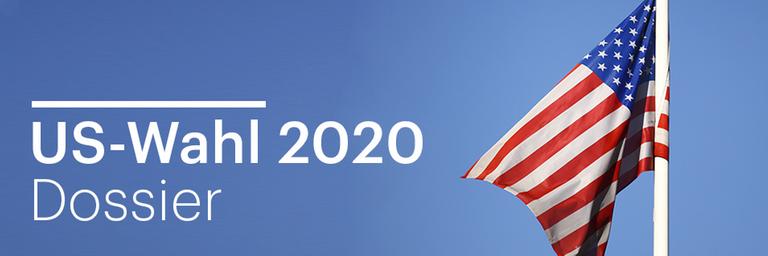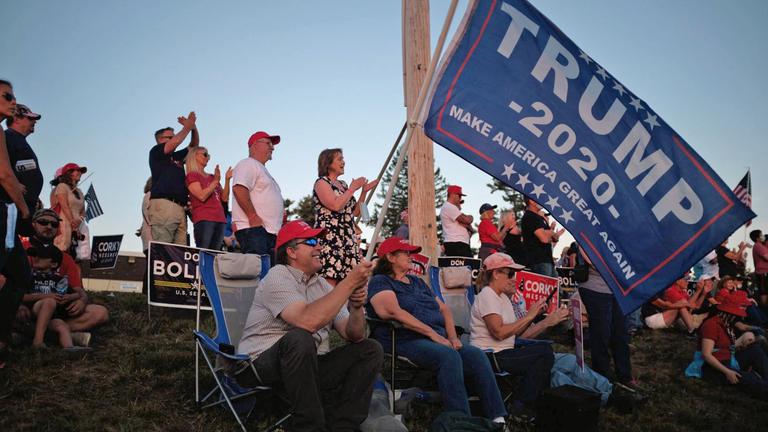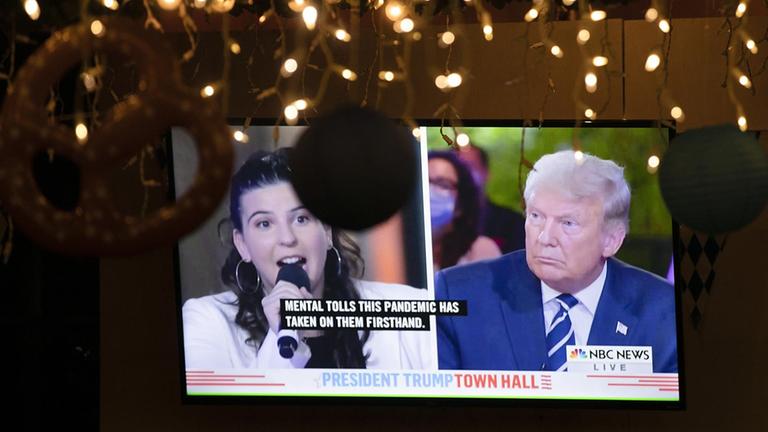–
America – land of the “swing states”, home of the electorate system: Swing states are those US states in which it cannot be clearly foreseen whether the Republicans or the Democrats, i.e. one of the two large parties, will have the majority in the US election. In the US election scheduled for November 3, 2020, the Americans will vote in their states and thus determine the electorate for the so-called “Electoral College”. It was not until December that the total of 538 delegated electors would vote for the 59th US President and Vice-President.
Many states are strongholds of the two big parties, so they are “safe states”. The traditional choice here is blue (for the Democrats) or red (for the Republicans).
 –
––
For example, safe states are California for the Democrats and the southern states for the Republicans. These are not particularly in focus in the election campaign. On the other hand, the surveys in the swing states are being watched with excitement in advance. In these states, the Republicans and the Democrats have won previous US elections. In the end, the swing states can also be decisive for the election result in 2020 – and thus for whether the Democrat Joe Biden will replace the incumbent Republican President Donald Trump in the White House or whether the incumbent will sit in the Oval Office for another four years. The election campaign therefore often focuses on precisely those states that do not have a clear electoral tradition.
The competitive swing states of the 50 US states in 2020 include: Florida, Texas, Pennsylvania, Ohio, Michigan, Wisconsin and Minnesota. Polls also suggest that Georgia, North Carolina, and Arizona may be close to the polls.
Democratic presidential candidate Joe Biden is currently leading the polls – including in the swing states. However, a clear lead does not mean that he will be elected president by the Electoral College 41 days after the election. The effects of the complex indirect electoral system became apparent in 2016: Hillary Clinton, as a Democratic candidate, led the polls for almost the entire election campaign, and more Americans voted for Clinton in the election. In the end, however, she lost the election to Donald Trump, as the Republicans were able to secure more electoral men and women – also by winning swing states. The background to this is the “winner takes it all” principle, according to which in 48 of the 50 federal states all electors of the state are awarded to the candidate who receives the majority of the votes. The states of Nebraska and Maine are exceptions to this principle. The electorate of these two states is determined proportionally and in part according to the congressional electoral district.
The special effect of indirect voting is that the number of votes in the Electoral College is more important than the votes of Americans at the ballot box – the so-called popular vote. The presidential election is won by whoever has at least 270 of the 538 voters behind them.
The electorate must vote for the candidate chosen by their state’s voters. In order to ensure that they are legally binding, voters will face severe penalties if they refuse to vote for candidates who have determined their state’s electorate. The Supreme Court recently ruled that these electors may be sanctioned by their states.
After the 2016 election, a total of five so-called “unfaithful electorates” turned against the Democrat Hillary Clinton, even though the majority of the respective states spoke out in favor of her. Two electorates withheld Republican Donald Trump’s vote that same year. Since 1796, 180 voters have behaved “unfaithfully”. However, unfaithful electorates have never been decisive for the outcome of a presidential election.
Florida is one of the most competitive swing states, as a total of 29 voters are sent from there to the Electoral College. The high number of voters is due to the large population of Florida. That is why Texas, with 38 voters, is also important for the outcome of the election. The traditionally republican stronghold is one of the swing states this year due to the positive polls in favor of Joe Biden. Incidentally, the most populous state of California provides the most votes for the election of the US president – with 55 electoral men and women. The Democratic Party has won a majority here since 1992. In comparison, for example, the sparsely populated states of Delaware and Montana have only three voters.
The common name “Swing States” could misleadingly assume that the population of these states tends to shift on political issues. The other designations “toss-up-state” (coin tossing state), “battleground state” (battlefield state) or “purple state” (as an allusion to a mixture of the party-affiliated colors blue and red) for these states could provide a remedy . The reason that the swing states are not party strongholds and election results cannot be predicted with certainty is due to the fact that these states have a more heterogeneous demography and the outcome of the elections is therefore much more influenced by the mobilization of the election campaign than in other states.

 –
– –
–
